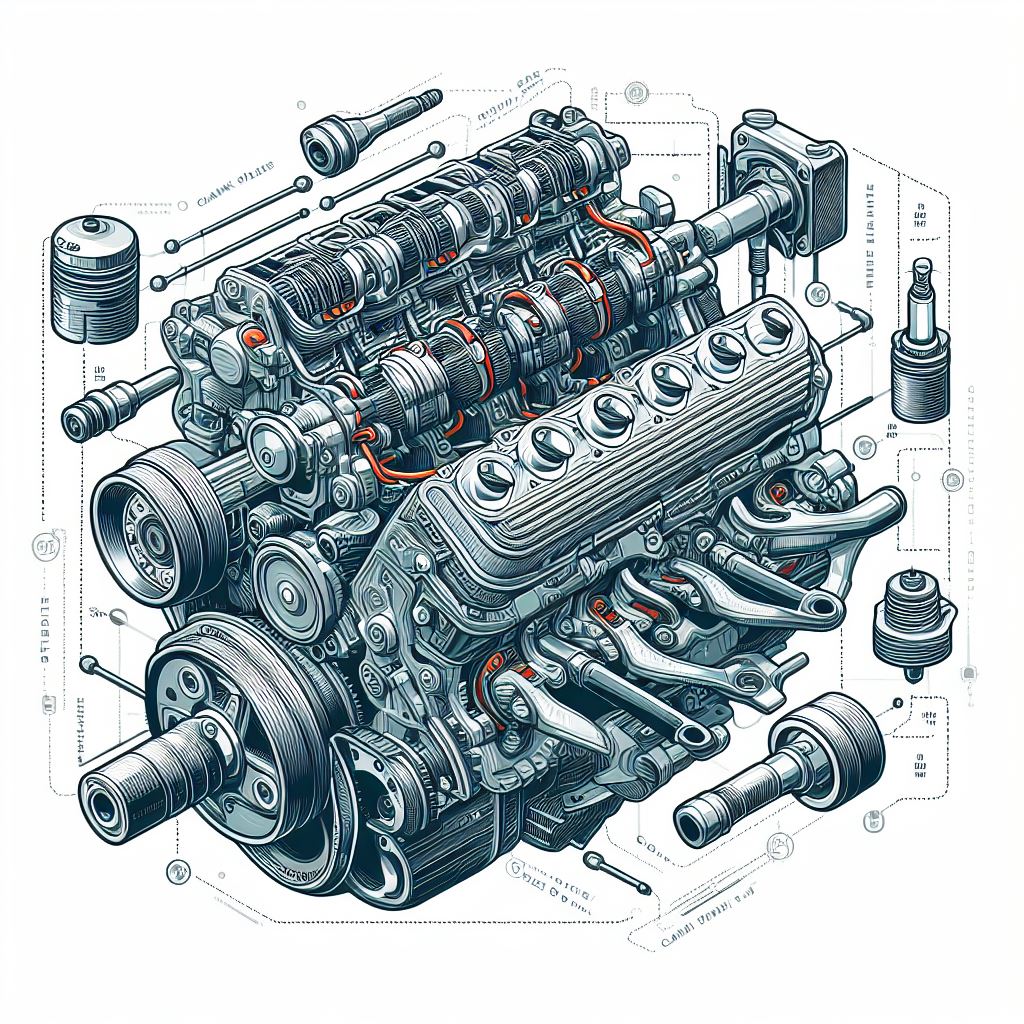In today’s fast-paced world, where automobiles play an integral role in our daily lives, possessing a comprehensive understanding of car components is paramount. Whether you’re a seasoned driver or a curious enthusiast, this article will serve as a guide to the essential car parts you should know about.
From the intricacies of the engine, electrical system, suspension, and braking system to the nuances of the cooling, transmission, fuel, exhaust, and steering systems, this knowledge will empower you to navigate the world of cars with confidence and expertise.

Key Takeaways
- Engine components include the engine, piston, cylinder head, crankshaft, camshaft, and timing belt/chain.
- The electrical system consists of the battery, alternator, starter motor, ignition coil, and fuse box.
- The suspension system includes shock absorbers, struts, control arms, sway bar, and ball joints.
- The braking system consists of brake discs/rotors, brake calipers, brake pads, brake lines, and the master cylinder.
- The cooling system includes the radiator, water pump, thermostat, fan, and coolant reservoir.
Engine Components
The engine components work together to convert the air-fuel mixture into mechanical energy, allowing the vehicle to move forward with power and efficiency. The engine, also known as the powerplant of a vehicle, comprises various components such as pistons, camshaft, and crankshaft.
Different types of engines, such as gasoline, diesel, and electric engines, exist to cater to different needs and preferences. The piston, moving up and down in the cylinder, converts fuel into motion. The cylinder head covers the top of the cylinder and houses the valves.
The crankshaft converts the linear motion of the pistons into rotational motion. The camshaft controls the opening and closing of valves. The timing belt/chain synchronizes the rotation of the crankshaft and camshaft, ensuring proper engine operation.
All these components work in harmony to provide the necessary power and performance for the vehicle.
Electrical System
An efficient electrical system, powered by a battery and supported by an alternator, is crucial for the proper functioning of a vehicle.
The battery serves as the primary power source, converting chemical energy into electrical energy to start the car and power the electrical components. It is typically located in the engine bay.
The alternator, on the other hand, charges the battery and supplies electricity to the various electrical systems in the vehicle. It generates electricity using the mechanical energy from the car’s movement.
Other key components of the electrical system include the starter motor, which turns the engine’s crankshaft to initiate the combustion process, the ignition coil, which converts battery voltage into high voltage for the spark plugs, and the fuse box, which protects the electrical circuits from overloading.
Overall, a well-functioning electrical system is crucial for the proper operation of a vehicle.
Suspension System
The suspension system plays a crucial role in ensuring the stability, comfort, and performance of a vehicle. It is responsible for maintaining contact between the tires and the road surface, which is essential for steering, braking, and overall vehicle control.
The suspension system consists of various components, including shock absorbers and struts. Shock absorbers control the movement of the suspension springs, absorbing and dampening the impact from bumps and uneven surfaces. They help to maintain the stability of the vehicle by preventing excessive bouncing and body roll.
Struts, on the other hand, provide structural support and damping for the suspension system. They contribute to the overall stability and performance of the vehicle by enhancing the suspension’s ability to absorb shocks and maintain proper wheel alignment.
Braking System
A critical component of a vehicle’s braking system is the brake master cylinder, which converts mechanical force into hydraulic pressure to activate the brakes.
When the driver applies pressure to the brake pedal, a pushrod inside the master cylinder is activated. This pushrod then transfers the mechanical force to a piston, which is located inside the cylinder.
As the piston moves, it creates hydraulic pressure by compressing the brake fluid that is stored in the cylinder. This hydraulic pressure is then transmitted through the brake lines to the brake calipers or wheel cylinders, depending on the type of braking system.
The brake calipers or wheel cylinders then apply pressure to the brake pads or shoes, causing them to make contact with the brake discs or drums, thus slowing down or stopping the vehicle.
Overall, the brake master cylinder plays a crucial role in the safe and effective operation of a vehicle’s braking system.
Cooling System
The radiator cools down the engine coolant by circulating it through the engine and radiator, ensuring optimal engine temperature and efficient cooling of the system. As the engine runs, it generates a significant amount of heat, and if not properly cooled, it can lead to engine damage and decreased performance.
The radiator acts as a heat exchanger, transferring the heat from the coolant to the surrounding air. The cooler air flowing through the radiator helps to dissipate the heat, allowing the coolant to cool down before it circulates back into the engine.
In addition to the radiator, the cooling system also includes other components such as the water pump, thermostat, fan, and coolant reservoir, all working together to maintain the engine at an appropriate temperature.
Regular maintenance and proper functioning of the cooling system are crucial for the longevity and performance of the engine.
Transmission System
The transmission system plays a vital role in transferring power from the engine to the wheels, allowing for smooth acceleration and efficient control of the vehicle. It is responsible for changing the gears to match the driving conditions, ensuring that the engine operates within its optimal range.
The transmission system consists of several components, including the gearbox, clutch, and differential. The gearbox contains a series of gears that can be engaged to provide different gear ratios, allowing the engine to operate at varying speeds.
The clutch is used to connect and disconnect the engine from the transmission, enabling smooth gear changes. The differential allows the wheels to rotate at different speeds while still receiving power from the engine.
Overall, the transmission system is crucial for ensuring the proper operation and performance of a vehicle.
Fuel System
Our fuel system is responsible for delivering the necessary amount of fuel to the engine, ensuring optimal combustion and efficient operation. The fuel system consists of several components that work together to store, filter, and supply fuel to the engine.
The fuel tank is where the fuel is stored, while the fuel pump draws fuel from the tank and sends it to the engine. Along the way, the fuel filter removes any impurities from the fuel to prevent damage to the engine. The fuel injectors then spray the fuel into the engine’s combustion chamber, where it mixes with air and ignites to produce power.
The fuel system must be properly maintained to ensure reliable performance and fuel efficiency. Regular fuel filter replacements and fuel system cleanings are essential for optimal engine performance.
Exhaust System
One important component of a vehicle’s exhaust system is the catalytic converter, which helps reduce harmful emissions by converting toxic gases into less harmful substances.
The catalytic converter contains a catalyst made up of precious metals, such as platinum, palladium, and rhodium, which facilitate chemical reactions that convert carbon monoxide into carbon dioxide, nitrogen oxides into nitrogen and oxygen, and unburned hydrocarbons into carbon dioxide and water vapor.
This process occurs through a series of chemical reactions that take place within the catalytic converter as the exhaust gases pass through it.
Steering System
Several components work together in the steering system to ensure smooth and precise control of the vehicle.
The steering wheel is the interface between the driver and the steering system, allowing the driver to turn the wheels and change the direction of the vehicle.
The steering column connects the steering wheel to the steering rack, transmitting the driver’s input to the wheels.
The steering rack is responsible for converting the rotational motion of the steering wheel into linear motion, which causes the wheels to turn.
Additionally, the steering system may also include components such as power steering pumps and belts, which assist in making steering easier and more responsive.
Overall, the steering system is crucial for maneuvering and controlling the vehicle effectively.
Conclusion
In conclusion, understanding the various components of a car is crucial for drivers and enthusiasts alike. By familiarizing themselves with engine components, the electrical system, suspension system, braking system, cooling system, transmission system, fuel system, exhaust system, and steering system, individuals can make informed decisions about maintenance and repairs.
This knowledge allows for a more enjoyable driving experience and empowers drivers to navigate the world of cars with confidence. Remember, with great car knowledge comes great driving power.
